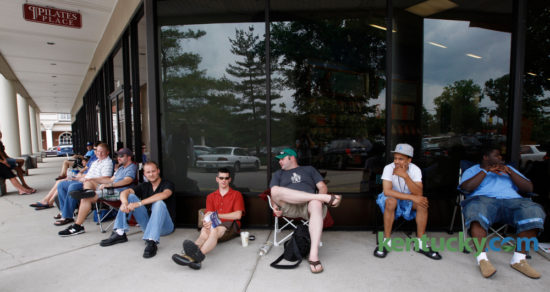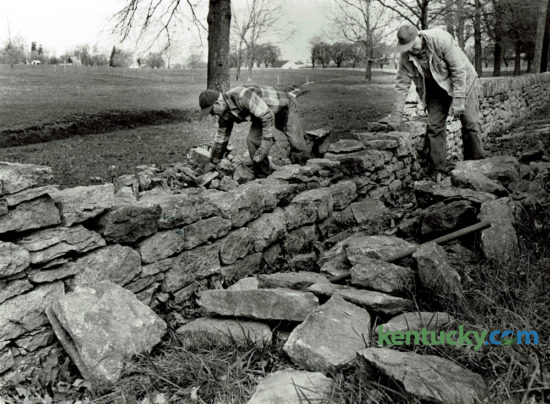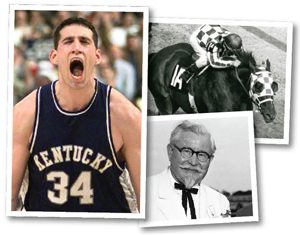July 11, 2025
Riding for Diabetes program, 1988
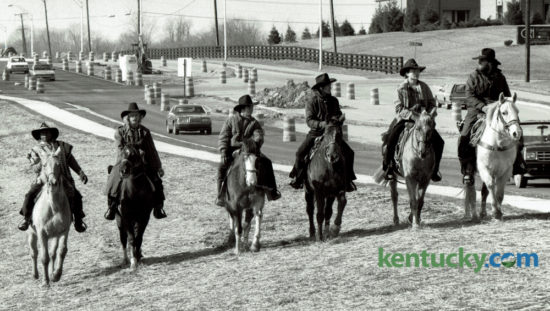
Six riders on horseback started out from Humana Hospital on a 1450-mile ride across Kentucky to raise money for the Kentucky Diabetes Foundation Patient Assistance Program on Feb. 24, 1988. The riders, from left, Kenneth Carter, Ray Crowe, David Napier, Allen Reynolds, Dennis Adams and Billy Adams, rode along Man o’ War Boulevard toward Winchester Road. Photo by John C. Wyatt | Staff
Apple iPhones go on sale in Lexington, 2007
First Rupp Arena seating chart, 1976
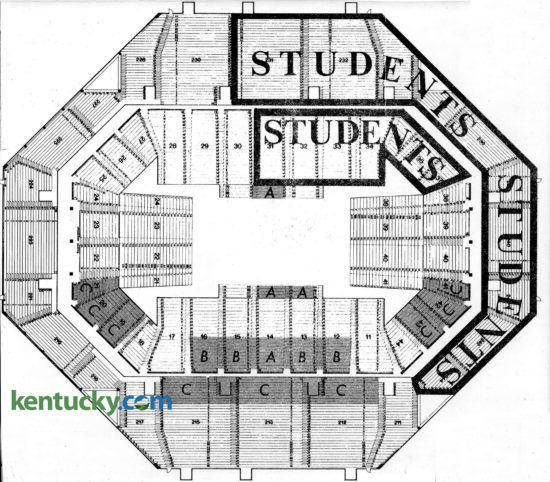
The first seating chart for University of Kentucky basketball games when Rupp Arena opened in the Lexington Center in 1976. The shaded A, B and C areas were designated for Blue and White Fund contributors. “We’ve got more requests for Blue and White Fund seats than we have seats available,” UK Athletics Director Cliff Hagan said five months before the new home of the Wildcats opened. “But I guess that’s a nice problem to have.” The Blue and White Fund, the fundraising arm of University of Kentucky Athletics and known today as The K Fund, was started in 1973 for football tickets when the Wildcats moved into Commonwealth Stadium. “We should have learned from the response to football — that should have been the barometer” Hagan said. “The real surprise has been the response of people who held priority seating in Memorial Coliseum. They’ve taken over half the 3,000 seats allotted to the fund.” Hagan said the 3,000-seat limit was self-imposed “to enable fans to attend the games at regular price.” Donation requirements were the cost of the ticket, plus $250 in the A areas, $100 in the B, and $50 in the C. The other 20,000 seats were divided among the public, faculty and students, who were offered 7,000 seats, including some at prime locations such as mid-court lower level. Student tickets were free, faculty tickets were sold at a reduced rate, and general public tickets were $5 for lower level, $4 for upper level. Despite the enormous task of moving from 11,500-seat Memorial Coliseum to 23,000-seat Rupp Arena, Hagan said, “People will still be 70 feet closer than the farthest seat in Freedom Hall.” Published in the Nov. 24, 1976 Lexington Herald. Click here to see a chart of donation levels required today. And click here to see a photo from our archives of the first game at Rupp on Nov. 27, 1976.
Lexington Mall property, 2010
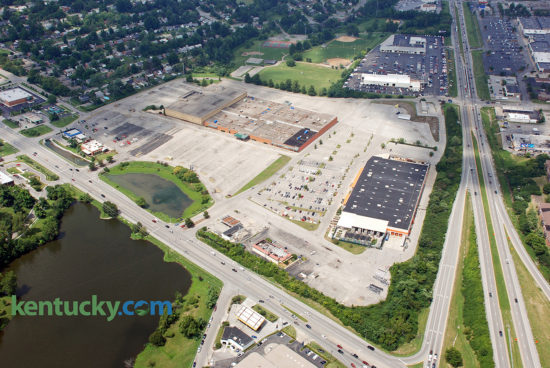
The Lexington Mall site at Richmond and New Circle roads on July 19, 2010, shortly after Southland Christian Church announced plans to buy the property. Dillards, on the left side of the mall in this picture, was the last tenant to leave, in 2005. Surrounding the mall property, counter-clockwise from left: The Home Depot, Perkins Restaurant and Bakery, a closed gas station, Applebee’s Neighborhood Grill and Bar, and a Central Bank branch. After demolition of the mall, Southland’s Richmond Road campus opened in 2013. That Applebee’s closed last summer, and Chick-fil-A announced Jan. 3 that it would open a restaurant at that property. Click here to see an image of the first Applebee’s on Richmond Road, just up the street in the French Quarter Square. Photo by Faron Collins
First Kentucky-Arkansas SEC game, 1992
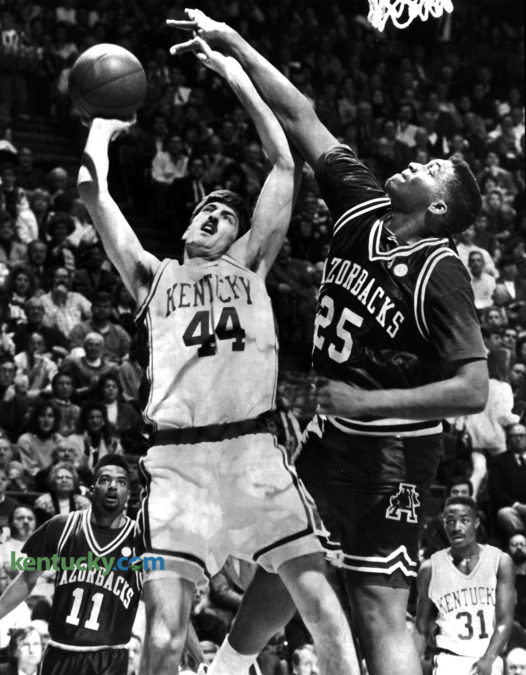
University of Kentucky forward Gimel Martinez put up a shot over Arkansas center Oliver Miller during the Razorbacks’ 105-88 win over the Cats on Jan. 25, 1992, at Rupp Arena. The long-awaited showdown between the two top-10 teams was the first meeting in league play since Arkansas joined the Southeastern conference. A record Rupp Arena crowd of 24,324 and what Arkansas Coach Nolan Richardson called “the atmosphere of the Final Four” had no discernible impact on the senior-dominated Razorbacks, who held UK star Jamal Mashburn to a season-low four points, snapping a string of 19 double-figure games. UK would finish league play as SEC East and SEC Tournament champions. Click here to see an image from our archives of the Cats celebrating their 16th conference tourney title. Photo by Frank Anderson | Staff
Lexington snowstorm, 1945
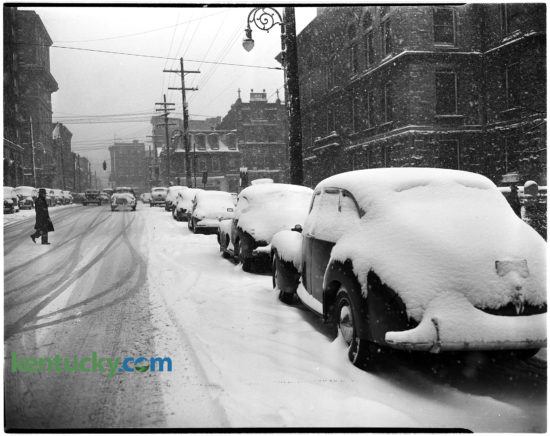
A pedestrian crossed Short Street behind the Fayette County Courthouse during a snowstorm on Dec. 5, 1945. More than 4 inches fell on Lexington, with some parts of the county reporting seven inches. Fayette County schools were closed the following day, but city schools were open. Herald-Leader Archive Photo
Kentucky legislature, 1940
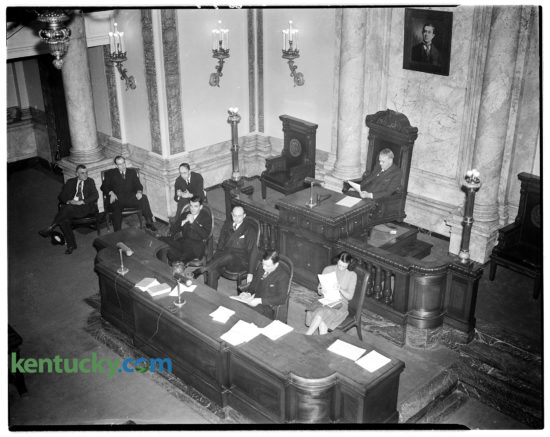
The Kentucky Senate chamber at the state capitol in Frankfort, during the 1940 General Assembly. During that 60-day session, lawmakers sent 206 bills and resolutions to the desk of Gov. Keen Johnson. He signed 76 of them into law, including a “fair trade” liquor bill, which provides minimum mark-ups of liquor and wine on sales by wholesalers and retailers. No maximum resale were part of the bill. Also made into law were measures intended to make banks safer and more efficient for both the investing public and Kentucky’s 318 state banks and 120 building and loan associations. On the last day, during the last hours of the session, lawmakers approved the use of voting machines during elections. Among the vetoed measures was a much-criticized proposal to tax coin-operated or token-operated vending machines. The 2016 session is underway. Herald-Leader archive photo
Repairing a Coldstream stone wall, 1976
Sled dog training in Georgetown, 1947
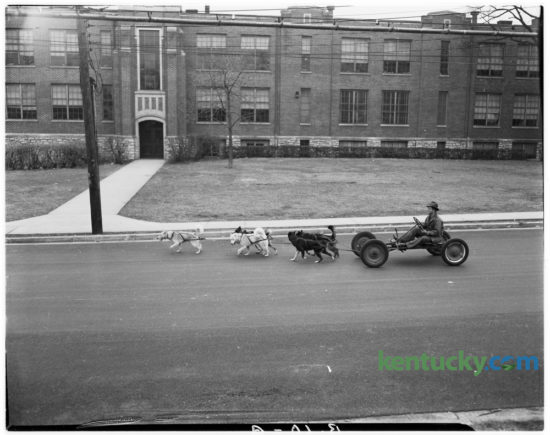
Billy Thomason of Georgetown rode a wheeled training wagon exercise his sled dogs in January 1947. Thomason, 28, who was an Army sergeant in World War II, spent 40 months as a dog trainer in the Army’s K-9 Corps, and when he was discharged, he was able to bring six dogs home with him. Two of the dogs, including lead dog Tuffy, a white Siberian husky, and Traveler, a white Eskimo, helped evacuate soldiers from the area of the Battle of the Bulge in Belgium. The building in the background was Garth High School in Georgetown. Published in the Lexington Herald on Jan. 3, 1947. Herald-Leader Archive Photo
Kincaid Tower ironworkers, 1978
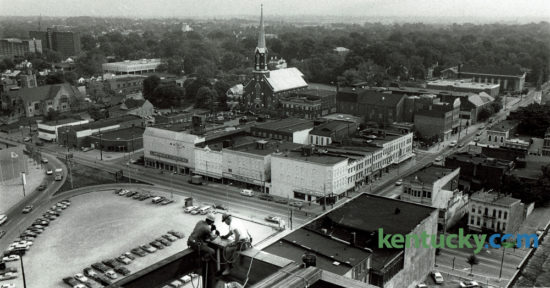
Ironworkers Doug Sloan, left, and John Baker fastened two steel beams together 14 stories up on the Kincaid Tower building in downtown Lexington in early June 1978. They were among about 30 ironworkers putting the steel structure together. Kincaid Tower, a 22-story office building, on the southeast corner of Broadway and Vine Street, was completed in 1979 at a cost of $20 million. It was the tallest building in Central Kentucky for eight years. The building became the headquarters for Kentucky Central Life Insurance. It also housed Central Bank and Trust, radio station WVLK and Kentucky Finance Co. Photo by Ron Garrison | Staff

